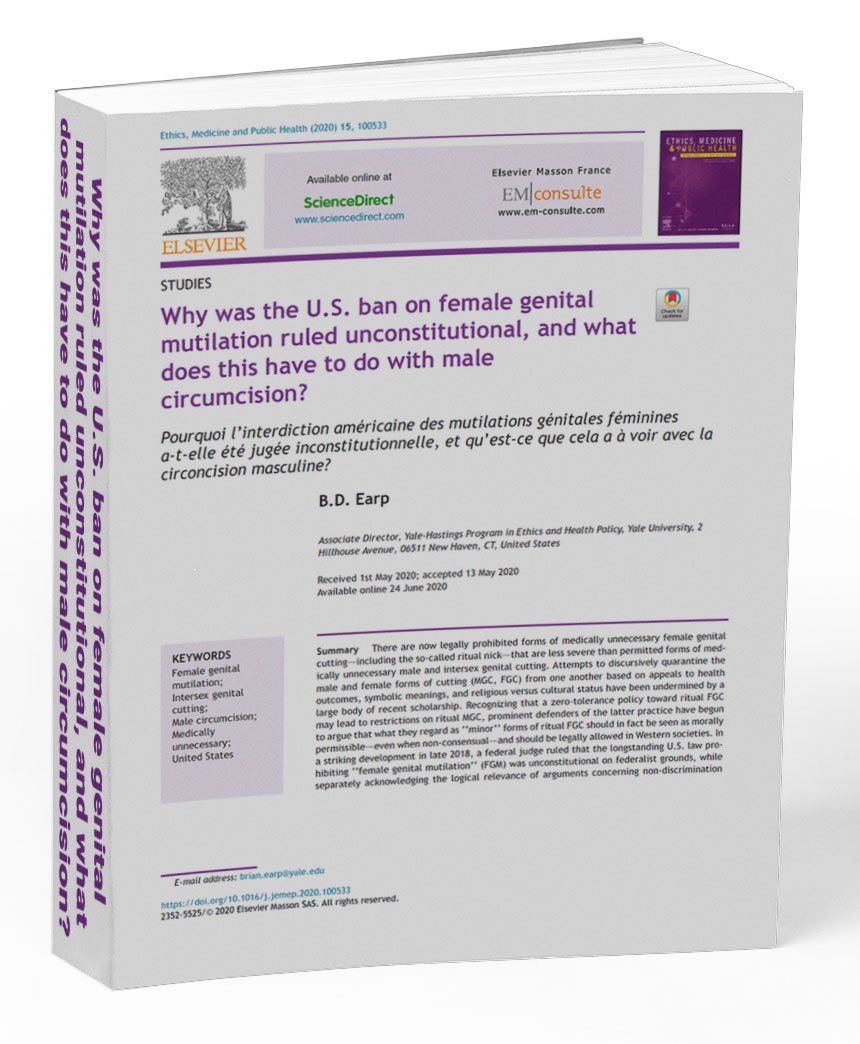PAPERS & ACADEMIC RESEARCH
Why was the U.S. ban on female genital mutilation ruled unconstitutional, and what
does this have to do with male
circumcision?
Summary There are now legally prohibited forms of medically unnecessary female genital cutting—–including the so-called ritual nick—–that are less severe than permitted forms of medically unnecessary male and intersex genital cutting. Attempts to discursively quarantine the male and female forms of cutting (MGC, FGC) from one another based on appeals to health
outcomes, symbolic meanings, and religious versus cultural status have been undermined by a large body of recent scholarship. Recognizing that a zero-tolerance policy toward ritual FGC
may lead to restrictions on ritual MGC, prominent defenders of the latter practice have begun
to argue that what they regard as ‘‘minor’’ forms of ritual FGC should in fact be seen as morally
permissible—–even when non-consensual—–and should be legally allowed in Western societies. In
a striking development in late 2018, a federal judge ruled that the longstanding U.S. law prohibiting
‘‘female genital mutilation’’

